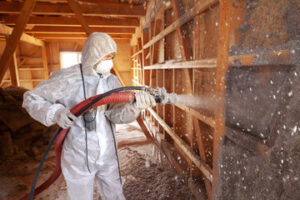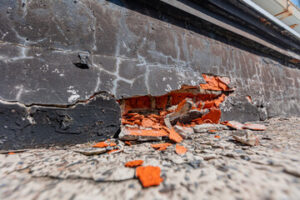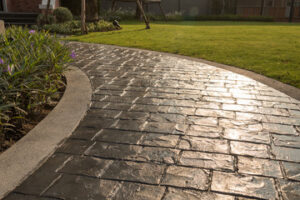Commercial Electrical Installation differs from residential wiring in terms of scale, safety requirements and specific business needs. A comprehensive understanding of the process allows you to make accurate estimates and ensure compliance with regulations and standards.

Electrical raceways, like conduit systems (RMC and EMT), cable trays and duct systems like bus duct, offer physical damage protection for wiring in commercial space. These also allow for easy cable organization and efficient power distribution.
Commercial electrical installation is more complex than residential wiring, as electricians must consider additional elements like the needs of different spaces and equipment. An electrical load calculation is performed to ensure the system can handle peak usage without overheating, and electricians work closely with architects and engineers to incorporate the electrical plan into the building’s overall design.
Commercial installations also include special considerations for safety and security. For example, fire alarms and security systems often require electrical power and wiring, which must comply with standards to minimize the risk of hazards like electric shock and fire. Keeping up to date with the latest safety regulations is essential for any business owner, and routine inspections help to identify potential issues that need attention.
Electrical wiring in a commercial setting is thicker than that found in a home, and it’s usually shielded from possible contaminants such as corrosive gases or liquids by a protective coating. This is an important feature, as it reduces the likelihood of dangerous conductors contacting other objects and causing a short circuit.
The structure of a commercial setting also influences the way an electrical system is installed, with different requirements for areas like offices, warehouses, and manufacturing zones. In addition to standard lighting and power sockets, industrial settings may need heavy-duty machinery wired for efficient operation.
Once the electrical installation is complete, a comprehensive testing and inspection process is carried out to verify compliance with safety standards. This involves examining the wiring to make sure it is not exposed, checking that switches and outlets are functioning properly, and ensuring that the grounding and bonding systems are in good working order. In addition, regular maintenance procedures should be carried out to address any problems identified during inspections.
Assessment and Planning
The initial assessment and planning stage of commercial electrical installation is vital for ensuring a comprehensive, seamless, and efficient process. It begins with a thorough evaluation of the power needs of the space, considering factors such as floor occupancy and the types of equipment used. It also involves assessing potential future upgrades and requirements, enabling businesses to better budget for them.
Once the assessment and planning phase is complete, it’s time to begin setting up the primary components of the electrical system. This includes installing the main panel board, which distributes electricity to different circuits throughout the building. It must be properly sized and rated to handle peak usage without overloading or posing a fire hazard. The wiring will then connect the main panel board to various areas within the facility, including lighting systems and fixtures, emergency lighting, and power outlets and switches. The wiring should be run in conduit to protect it from damage and to minimise the number of junction boxes needed.
It’s important to carefully assess the specific needs of a commercial property, as not doing so can lead to costly mistakes during the installation process. Common mistakes include not adhering to safety regulations, using improper wiring methods, and neglecting regular maintenance. By following the tips and guidelines outlined in this article, you can ensure a successful and hassle-free electrical installation process.
Emerging technologies are shaping the future of electrical installations, enabling smarter and more energy-efficient solutions. From smart lighting to energy storage, these innovations can provide businesses with more control and flexibility over their power consumption and supply, reducing costs and promoting sustainability. In addition, advancements in safety standards are allowing electricians to implement new and improved circuit protection devices and insulation materials, further protecting people and businesses from electrical hazards.
Installation
Electrical wiring in commercial spaces has to meet higher standards and regulations. This is because these buildings tend to have higher power consumption. Additionally, they might house heavy machinery or equipment that requires specific electrical wiring. Moreover, they might also have back-up electricity to cater for emergencies.
During the installation process, it is crucial to follow strict safety protocols. This includes turning off the main power supply before beginning work and using insulated tools. Additionally, the electrician must ensure that all circuits are properly labelled to avoid confusion and reduce the risk of accidental activation.
The first step in commercial electrical installation involves connecting the building to the municipal power grid. Then, the electrician must run the wiring throughout the space, following pre-planned routes and securing them to prevent damage. They must also install outlets, circuit breakers, and switches in their designated locations. They must also set up lighting systems, including emergency lights and exit signs.
One of the biggest differences between residential and commercial electrical installations is that commercial settings prioritize accessibility over aesthetics. This is because electrical wiring in commercial spaces often runs through open areas, and they may be exposed to corrosive materials or moisture. Additionally, they need to be able to be easily repaired and shut off. Therefore, commercial wiring is often more rugged and heavily insulated than domestic wiring.
In addition to this, it is crucial to hire an experienced and qualified commercial electrician to handle the electrical work in a commercial property. This will help you avoid common mistakes and issues like failing to adhere to safety protocols, ineffective installation of electrical panels, and incorrect wiring methods. In addition, a professional will be able to handle complex tasks like outdoor direct burial feeders and busways.
Testing
Testing is vital for confirming that the design and construction of electrical systems meet specific standards and regulations. It’s also an opportunity to identify and resolve issues, minimizing the risk of unexpected failures or malfunctions. This proactive approach helps ensure maximum efficiency and extends the lifespan of electrical infrastructure.
A commercial electrical system must meet stringent requirements to ensure occupant safety. The key components include the main electrical panel, which distributes power to other circuits and equipment in a building. The panel must contain adequate circuit breakers to protect against overloads. Wiring is responsible for carrying electricity from the panels to different areas of the building, and it must comply with industry standards. Junction boxes and conduit pipes help keep wiring organised and protected, while outlets, switches, and lighting fixtures provide access points for electrical devices and appliances. Finally, network cabling supports telecommunication and internet connections in a business setting.
During the installation process, contractors must follow strict safety precautions to avoid electrocuting workers or causing other damage. This includes shutting off the main power supply before beginning work and using insulated tools to prevent contact with live wires. They must also follow pre-planned routes and carefully secure cables to minimise the chance of accidental tripping or falling.
Testing is an essential part of any electrical installation, and it’s especially important for commercial settings. These settings have greater power demands and require more complex equipment than residential settings, making them more susceptible to failures. Regular testing helps prevent unexpected malfunctions and extends the life of the system. It also helps reduce operational downtime and boosts productivity. Identifying and addressing issues during this phase helps minimize costly repairs and maintenance costs in the future.
Inspection
One of the most important parts of commercial electrical installation is inspection. This ensures the work meets standards and is safe for professional occupancy. Inspectors will look at all exposed wiring to identify any signs of wear, potential issues, or violations of electrical codes that may pose a danger. They will also inspect circuit breakers and fuses to ensure they are functioning properly.
One common issue is improper grounding or bonding, which can result in serious physical damage to people and property. In addition, inspectors will check that all outlets and equipment are properly grounded or bonded, and that they have proper GFCI (ground fault circuit interrupter) or AFCI (arc fault circuit interrupter) protection as required by code for specific uses. They will also make sure that all access points are clearly labeled for safety and that non-qualified personnel cannot reach them.
Regular inspections of commercial electrical systems are an effective way to detect potential issues that can lead to expensive repairs down the road. They can also catch energy inefficiencies that will reduce electricity bills and help the environment. In addition, they can ensure that systems and appliances function correctly, avoiding production delays or losses.
Using a reputable and experienced team of electrical professionals for your commercial electrical installation will ensure compliance with electrical regulations, the highest level of safety, and long-lasting efficiency. A qualified team will use a range of specialised tools and equipment to carry out thorough testing, including voltage meters, thermal imaging cameras, insulation resistance testers, and others. They will provide a comprehensive report with clear explanations of any issues found, and recommendations for action. They will also provide documentation for future reference, ensuring that you meet all relevant maintenance and compliance requirements.



